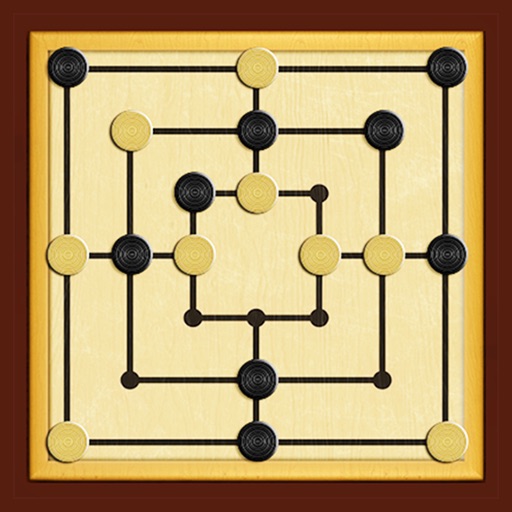

When the box was closed, one surface had a chessboard while the other had a Nine Men's Morris board. During the fourteenth century, Nine Men's Morris boards were a part of a set of games that were played on "shallow boxes with hinged lids" (Bell 8). The game was most popular in the 14th and 15th Century. The central square known as the Cauldron or Mill was a symbol of regeneration while the lines and squares coming out from the middle were symbols of "the four cardinal directions, the four elements and the four winds"(Mohr 30).Īlthough it is not known when Nine Men's Morris reached Britain, it was widely played during the Middle Ages, along with similar games such as Three, Six, and Twelve Men's Morris. To the ancient Celts, the Morris square was sacred. In the US, Kere, Tigua, Tew and Zuni Indians played a version of the game called paritariya, picarva, and pedreria. Evidence of the board scratched in the ground has also been found in the Bronze-Age Ireland, ancient Troy, and the Southwestern United States. In Ceylon two boards are cut on the steps leading to the hill at Mihimtali and others are found on a rock near Lankarama dagaba. AD 10) and in the Gokstad Viking ship (c. Other boards have been discovered in Ceylon of Sri Lanka (c. The earliest known diagram of this game was found in an Egyptian temple in Kurna Egypt, dating around 1440 BC. Morris does not have to do with Morris dancers, instead it comes from the Latin word merellus, meaning the corruption of counters. It is an alignment and configuration game that is found widely around the world. Morrells left.Nine Men's Morris is believed to be one of the oldest games in history. The other player moves normally, unless he also has only three He doesn't have to follow the lines on the board at all when moving. On the board on his turn, no matter where that morrell starts from. When someone is down to only three morrells, that player can move one of his morrells to any empty space Winning: Players continue moving their morrells in this way, and a morrell is removed every time a mill is made or remade until one player eitherĬan't move at all because his morrells are blocked in (in which case, he loses the game) or he has only three Pieces needed to make the mill on his turn or moved one of his pieces to block yours.

Morrells out of a mill on one turn and back in again on the next turn, provided that your opponent hasn't removed one of the You can only move one morrell per turn, and a morrell only moves one space at a time. Opponent take turns moving one of your morrells to an adjacent empty space. Moving Pieces: When all the morrells are on the board and no one has any mills, you and your Of his pieces are in the best position to help him make a mill and take one of them. Tip: When deciding which of your opponent's pieces to remove, check to see which Diagonals do not count in forming mills they mustīe in straight lines, following the black lines of the board. That, you can remove any piece you choose. You cannot remove morrells that are currently part of a mill, but other than Making Mills: When you get three of your morrells in a row, you can take one of your Try to block your opponent from getting three in a row as well because that is how players can remove Three morrells in a row while placing them on the board, but your opponent will try to block you. Some strategy is involved in the placing because each of you willīe trying to get three of your morrells in a row, which known as a mill. Morrell, and there will be some spaces empty. The board at the points marked by the dots until you run out of morrells. Take turns placing your morrells, one at a time, on Placing Pieces: Start with the board completely empty. The basic design of the board looks like this: The rules come from Medieval Celebrations by Daniel Diehl and Mark Donnelly (pp. Sets of 9 pieces (each a different color or design so you can tell them apart, I used circles cut from colored Object: To eliminate the morrells of your opponent until he or she has only two left.Įquipment: Nine Men's Morris board ( printable) and two Nine Men's Morris is still played by people today. Sometimes, the game was even played outside on a large board with real peopleįor playing pieces (Cosman 55-56). There were nine of them for each player and the pieces for each side were different enough in shape or colorįor the players to tell them apart. (pieces carved from wood or ivory, ordinary stones, etc.) as long as The game pieces ("morrells") could be anything Game board or draw the diagram of the board in the dirt. It could be played almost anywhere as long as there was somewhere to place a ready-made Another name for this game is Merrills (Diehl and Donnelly 70).


 0 kommentar(er)
0 kommentar(er)
